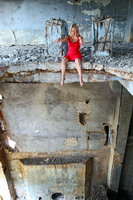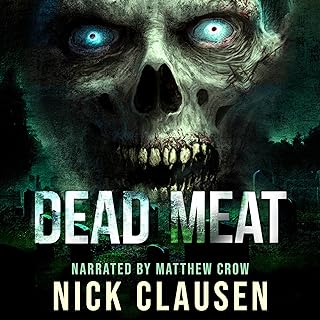Zombie Hunting For Beginners
 Zombie hunting is one of the most necessary hunting genres in the entire world with more and more zombies appearing every year. For a first time zombie hunter it can be a rather difficult thing to do that is why a few tips and tricks about this type of activity are needed in order to start out with decent results.
Zombie hunting is one of the most necessary hunting genres in the entire world with more and more zombies appearing every year. For a first time zombie hunter it can be a rather difficult thing to do that is why a few tips and tricks about this type of activity are needed in order to start out with decent results.
Experienced zombie hunters recommend checking the hunting equipment when going into the zombies’ environment, not later when a zombie will eventually walk out. Check if your scope is clear, the shells in the chamber or if you use a bow, check if your bow will draw back properly. There are many issues to take into consideration that is why we strongly advise to prepare well ahead. Free Basic Hunting Guide
If you plan on hunting zombies in a city or a large woods it is recommended to do it during the early hours of the day. Remember that zombies like freedom of movement so it is advisable to try and clear a targeted path through the area that you consider these creatures might use. The zombie usually follows the path of least resistance using the easiest routes possible. Once you have set up a path, hunt over the built path in a hunting tree stand or sniper post.
If using zombie moans isn’t your cup of tea ( mainly because you are afraid of aggravating these creatures), it is advisable to use it only after you see a zombie that you are not planning to shoot right away as they can lure more zombies to the area. Once you have done so, try some medium moans, you will notice that it doesn’t agitate them and you will observe their reactions. Be sure to use the most suitable moans, otherwise the creatures will get aggressive.
The best advice possible is to hunt zombies whenever you have the possibility. Experience is crucial, only by going out there in the wilderness you will learn more about their habitat, feeding habits and other characteristics that you will eventually use in your advantage. We strongly suggest that you follow our advice and the next time you have the possibility to hunt, don’t hesitate, you know what they say: practice makes perfect and this is statement is entirely applicable for hunting not only zombies but food animals as well.
When you are about to hunt in a new area, it is advisable to hunt at a new stand each day for a short period of time as this is the most efficient way to learn about the zombie movement routes. If you spot a zombie and shoot it and afterwards you jump it up a very short distance from the position you have made the shot, it is advisable to stand back and give it time to stop moving, if you shot it during the late hours of the day it is recommended to wait overnight.
If you plan on hunting zombies with a bow, experienced hunters recommend doing it from a tree stand because it is way more efficient in comparison with hunting from ground level. Another advice, use only one pin because it is easier to aim high or low on the creature’s head than attempt to remember to use a specific one when the lead zombie walks out. When the lead zombie is eliminated the others will shamble about aimlessly, easy pickings.
We hope that our suggestions will come in handy and on your first attempts on hunting these creatures you will get at least decent results. Remember; practice every time you have the chance.
Wilderness courses are rapidly becoming a popular way to learn more about different survival tactics for camping, hunting, hiking, biking, and more. Whether you’re planning on pursuing zombies (often an outdoor activity) or you just want to commune with nature in the safe zone, wilderness courses are the perfect solution for you. Here are a few ways a course such as this can benefit you.
Wilderness courses do more than just allow you to become acquainted with the act of interacting with nature. It also teaches you the value of being prepared and anticipating any number of emergencies. Once your course is finished, you’ll be able to better appreciate the wonders of nature with the knowledge that you know what to do should a mishap occur.
For example, a common scenario that many wilderness courses cover includes what to do should you run out of food or some creature thinks you’re food. In an ideal situation, you’ll have already packed extra provisions that you can stretch out over a long period of time. These can range from simple snacks, such as granola, beef jerky, dried fruit, and mixed nuts, to freeze dried or dehydrated meals. Ideally, your food kits should be extensive enough to be able to provide you with enough to live on, but not packed so thoroughly that they’re too bulky or heavy. Canned foods and vacuumed sealed meals are other lightweight alternatives to this.
Another skill that some wilderness courses teach is how to forage for food. This can be quite a useful talent to have, especially if you’re tired of living off of your provisions. Foraging provides you with fresh, healthy food that does wonders for supplementing any meal. Along with teaching you how to find edible substances in abundance, quality wilderness courses will also show you the basics of identifying potentially poisonous or otherwise harmful plants, shrubs, and fungus.
Wilderness courses will also teach you a few tricks to keep in mind should you or a partner become injured. Along with basic first aid, a good class should also teach you what to pack in a quality first aid kit. While there are many assembled kits available, it’s still a good idea to customize it with your own specific requirements as well. This includes adding essentials such as extra medication, supplements, stabilizers, and more. Wilderness courses should also provide a crash course in how to use many of the devices and other supplies equipped in many first aid kits, such as wound irrigation systems, fish hook removers, bone splits, and others. Take the time to learn more about how wilderness courses can benefit you!







